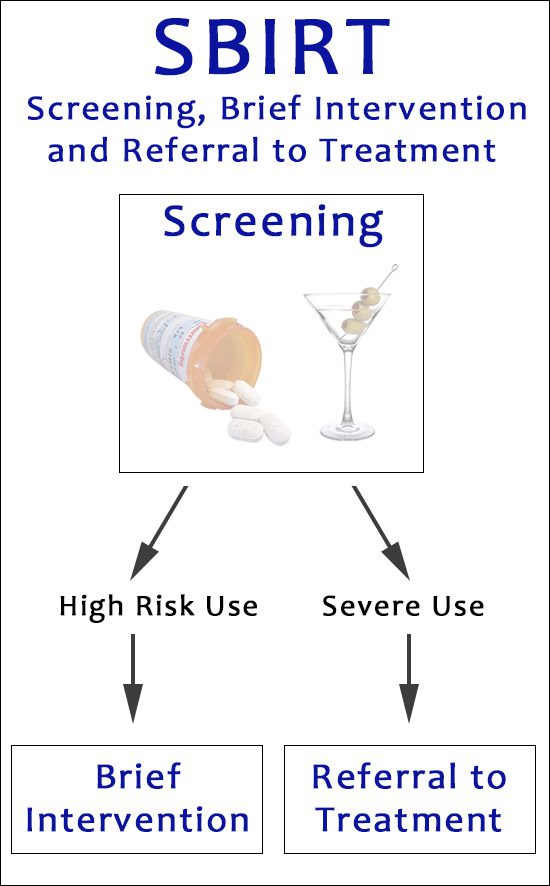The prevalence of addiction in the United States, from tobacco use to alcoholism, and the opioid epidemic to other illicit drug abuse, takes a costly toll on the nation’s physical, emotional and financial wellbeing.
The National Institute on Drug Abuse (NIDA) estimates the price of substance abuse-related issues, such as lost work productivity, crime and health care, is more than $700 billion annually.
Experts believe that the main component in reducing the number of lives lost or devastated as a result of addiction is finding ways to recognize and address substance abuse in its earliest stages.

Screening, Brief Intervention, and Referral to Treatment (SBIRT) is a tool for health care professionals to identify problematic substance use, such as a patient’s risky relationship with alcohol or other drugs before addiction has set in.
How Do Screening, Brief Intervention and Referral to Treatment (SBIRT) Work?
The Substance Abuse and Mental Health Administration (SAMHSA) describes this evidence-based practice for screening possible substance use disorders in the following way:
1. Screening
Screening is the first phase, where healthcare professionals, such as physicians, their assistants, nurse practitioners, psychologists, social workers and others, can use a set of standardized questions in any healthcare setting to assess patients for risky substance use behaviors.
2. Brief Intervention
A Brief Intervention allows health care professionals to start a discussion with at-risk patients, providing feedback and advice on unhealthy and problematic substance use, misuse, or dependence.
3. Referral to Treatment
For patients in need of further therapy or treatment, they will receive a Referral to Treatment for the appropriate services to help them before their condition progresses.
“SBIRT is unique in its universal screening of all patients regardless of an identified disorder, allowing health care professionals to address the spectrum of such behavioral health problems even when the patient is not actively seeking an intervention or treatment for his or her problems” New Mexico State University explains on its SBIRT page.
In other words, SBIRT, when appropriately used, is an effective method for detecting and treating substance abuse issues that people might be unaware they even have.
What are the Potential Outcomes of Using SBIRT?
When the majority of health care professionals adopt this standardized practice, the potential outcomes can be significant. These can include:
- Reducing the 88,000 alcohol-related deaths a year, as well as the more than 70,000 drug overdoses recorded in 2017
- Decreasing the emotional, financial and legal costs that addiction places on individuals, their families and society-at-large
- Creating better access to addiction treatment for those most at need and unlikely to get or seek treatment otherwise
SBIRT Training Resources and Online Courses
There are many available outlets for SBIRT training from qualified sources, either online or in person.
SAMHSA provides a list of SBIRT training resources in an effort to facilitate the broadest adoption possible of this evidence-based tool.
There are also online courses. Medscape, a website for health care professionals, offers a free online SBIRT course.
Substance abuse and addiction treatment can still be incredibly effective for people who are already in the middle to later stages of the disease and fear the side effects of withdrawal.
Medication Assisted Treatment (MAT) can help patients move safely through detox and into recovery. MAT is now widely accepted as one of the most successful ways to treat a variety of addictive substances, especially heroin and opioid addiction.
SBIRT is a way to potentially identify and address risky substance use and bypass much of the physical, mental, emotional and financial damage caused by the disease of addiction.
The greatest potential lies in the fact that SBIRT can be used by a vast number of medical professionals to screen for possible substance use issues, where previously an addiction professional was needed to make that determination.
By catching substance dependence early before it reaches the stage of addiction, many lives can be saved and we might begin to see some light at the end of the opioid epidemic tunnel.
Related:
Why Do People Become Addicted To Drugs and Alcohol?
NIDA’s 13 Principles for Effective Treatment of Addiction





